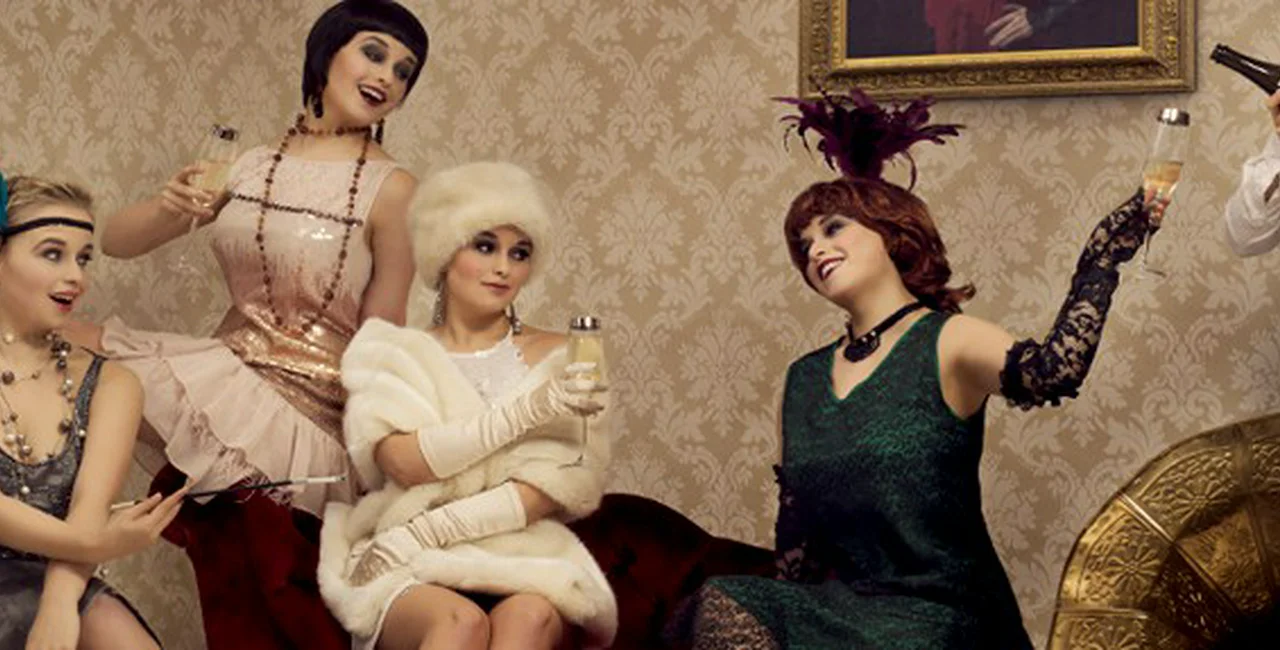The modern era with its casual manners can be something of a maze for the socially-challenged like me. Is it two kisses or one? What gift is appropriate for someone you’ve known a little while? Are these shoes right? I have always felt that I needed some guide for social situations.
Had I lived back in the First Republic era or earlier I would have had my choice. Jiří Stanislav Guth-Jarkovský, poet, traveller, Olympic official and etiquette enthusiast, wrote several books on proper conduct.
Were this not enough, in the 1920s you could purchase the three volume Pravidla společenského chování (The Rules of Social Behavior), which devotes the kind of specificity you would expect to find in a flight manual to courtship, entertaining and letter writing.
On closer inspection, though, I’m not sure this advice works for our time.
Absolutely No Touching
The one volume of Pravidla společenského chování I could track down deals with relationships. However, after reading the rules, you would be excused for thinking the book was more concerned with how to stifle feelings as opposed to letting them flourish.
To quote from the book, “Every public display of affection in whichever moment and in whatever place is flashy and vulgar.”
The book even instructs young couples from using “sweet words and compliments” in front of other people. Apparently, young lovers had to emulate the statues they would find around Prague.
Labyrinth of Love
Actually, what I said about modern manners being a maze is nothing compared to the rules given for courting in Pravidla společenského chování.
If the young couple’s passion was somehow not extinguished by the prohibition on affection, an involved engagement followed. Permission had to be sought, letters written and refreshments prepared. Sandwiches were recommended.
Assuming the young man impressed the woman’s family, and the sandwiches were to the man’s liking, the couple were engaged…which brought even more rules.
For example, the woman needed her fiancée’s permission to meet another man. The engaged couple themselves were no freer because according to the rules of etiquette they should not appear at a ball, café or even go for a walk, alone.
If the young man decided to call off a courtship – and I’m sure plenty did from sheer frustration, personal and otherwise – the woman was on no account allowed to find out why. Severing all contact without explanation was evidently more gentlemanly.
Letter of the Law
Pravidla společenského chování doesn’t simply provide the rules for love. It even tells you in exact detail how to write a letter down to the type of paper.
If the letter was a wedding invitation, it had to be white or cream with a smooth surface. The preferred dimension was 18 x 15 cm. Sizes three centimeters bigger than this were not recommended.
There was not much more freedom for ordinary letters. The surface again should be smooth and unlined, though the preferred colors were white or light gray. Any ink other than black was considered in poor taste and men were told not to use small sheets of paper. Even then size mattered.
Gender Specific
If Pravidla společenského chování went into immense detail, Guth-Jarkovský’s rules in his book Společenský Katechismus (Social Catechism) would have to win an award for severity. One of his rules included that a women should never start conversations in public.
The sexism didn’t always work in men’s favor. Guth-Jarkovský wrote that on a crowded tram or bus a man did not have the right to ask a woman to disembark in order to let him off. Men disembarked by allowing the woman to step further into the tram or bus. Under no circumstance was he allowed to show his displeasure.
Guth-Jarkovský even had a rule for when two women and a man were walking. The oldest and most respected woman went in the middle, the other woman – referred to in the text as literally “the other woman” – went on the middle woman’s right and the man on the middle woman’s left.
Everything in Its Place
The strict arrangement was even applied to a woman with children. The mother was to walk in the middle with the eldest child on the right and the youngest on the left.
Proper arrangement was not confined to walking. In coaches and automobiles with four seats, the two rear seats were reserved for the oldest and most important. The right side was to be offered to a passenger. This rule assumed a person had a coachman or chauffeur along with the vehicle.
As for children and cafes – there was one simple rule. They did not belong there.
Ignorance Is Bliss
If a person witnessed something unpleasant, they should turn away and not take notice. It was even better when it rained. They could pull their umbrella down (of course a civilized person had an umbrella) and shield their eyes that way.
L.P. Hartley famously wrote “The past is a foreign country.” Reading some of these social rules, you may think it was on another planet.












 Reading time: 4 minutes
Reading time: 4 minutes 





























